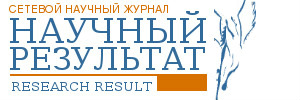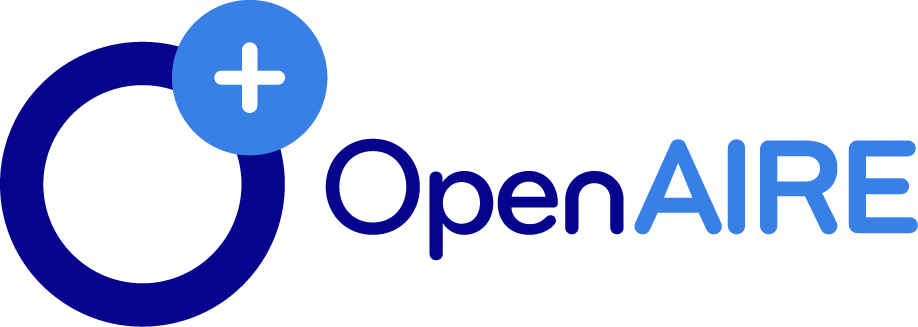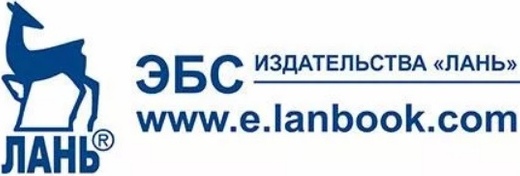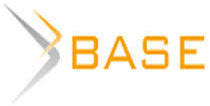ОБУЧЕНИЕ КРИТИЧЕСКОМУ МЫШЛЕНИЮ СТУДЕНТОВ, ПОЛУЧИВШИХ ОБРАЗОВАНИЕ НЕ НА ЗАПАДЕ: НАЗИДАТЕЛЬНАЯ ИСТОРИЯ
Aннотация
В настоящем исследовании показано, что экспорт таких образовательных концепций, как критическое мышление, для постсоветских народов Казахстана и России представляет непредвиденные проблемы для западных преподавателей на университетском уровне, особенно в языковой подготовке. Штатные и внештатные преподаватели, работающие на местах (т.е. получатели заимствованных стратегий и методологий), заявили, что хотят изучить стратегии критического мышления, но часто не желают отказываться от запоминания, «зубрежки» и выполнения разного рода упражнений, включая выбор правильного ответа из нескольких вариантов, заполнение пропусков, а также устный опрос с заранее выученными ответами. Даже если учителя пытались применять некоторые новые технологии, они вскоре возвращались к своим старым проверенным методам. В этой статье рассказывается о том, какое упрямство демонстрировали учителя при использовании новых концепции в своих классах. Кроме того, в ней дается объяснение этого сопротивления, с использованием модели авторитарной личности и социокультурных теорий Йоста и др. [6] Леонтьева [9] и Выготского [20, 21]. Педагоги всех направлений и областей должны обратить внимание на это редко обсуждаемое социокультурное и социокогнитивное влияние на обучение учащихся, а также страх перед риском и, возможно, неудачей. В статье приводятся некоторые методы, направленные на преодоление подобного сопротивления.Ключевые слова: Критическое мышление, (пост) советское образование, экспорт образовательных концепций, импорт образовательных концепций, познание, обучение, социокультурное, социокогнитивное
Introduction
Research into educational transfer (aka educational lending) in the field of comparative education is growing quickly. Beech defines the concept as “the movement of educational ideas, institutions or practices across international borders” [2, p. 2]. This paper uses the term lender to refer to anyone intending to take educational concepts abroad, and borrower to refer to recipients, who, in this case study, were in-service and pre-service teachers learning the concepts of critical thinking and new methods in language learning in Kazakhstan and Russia.
Many scholars have investigated issues such as whether institutional structures can allow or accommodate new concepts, and how their teaching is best accomplished, to name only a few [2, 18]. The goal of educational lending is to provide a “pragmatic tool for identifying and transferring ‘best practices’ from one context to another.” The intent is to increase the opportunities and improve educational quality by assuming a “common and legitimate ‘blueprint’ of educational policies and practices” [16, p. 229].
Educational transfer is not as simple as exchanging information because policies do not travel “in a contextual vacuum or land on a blank slate” because they are often “constrained or enabled by historical, political, institutional and structural legacies” [15, p. 51-52].
These issues come into focus when lenders attempt to bring critical thinking and new language teaching methods into post-Soviet contexts. That legacy includes educational stakeholders reared to be obedient and expect instructions from those above them, resulting in “difficulties with decision making and individual responsibility” [14, p. 28].
Additionally, the government suppressed inquiry into opposing views and used the educational system to support its politics. Citizens were subjected to collective education, thus “jeopardizing development of individual and diverse opinions” [14, p. 28], practices anathema to critical thinking and a democratic society.
This paper holds that these contextual influences have even broader implications in that they shape recipients’ pedagogical expectations and cognitive readiness for new practices such as critical thinking. This paper aims to illustrate that ignoring recipients’ sociocultural and sociocognitive backgrounds, specifically among those from an authoritarian system, may lead to stymied attempts to transfer that knowledge. This outcome is predicted by sociocultural theorists such as Leontiev [9] and Vygotsky [20, 21], who stated that learning is not simply the ingestion of facts but results from the much broader, more comprehensive process of external, socially mediated activity that becomes internalized. What is born of history and society becomes part of an individual’s internal way of understanding and learning.
This article attempts to show how understanding the sociocultural influences of Kazakhstan and Russia explains teachers’ sociocognitive mindset, i.e., their resistance to, expectations about, and lack of cognitive readiness for concepts such as critical thinking because of traits owing to their authoritarian past, as outlined by Jost, Glaser, Kruglanski, and Sulloway [6]. Their findings have implications for anyone intending to lend new concepts to those from an authoritarian background. Suggestions are also given for dealing with those educated in this environment. Critical thinking is used as an exemplar of the kind of material evoking such resistance. But any concept outside the students’ ken and current practices, especially those involving higher cognitive activity [3], may meet with similar resistance.
Critical thinking—its pedagogical and cognitive demands
This paper relies on Lipman’s definition of critical thinking: “Critical thinking is skillful, responsible thinking that is conducive to good judgment because it is sensitive to context, relies on criteria, and is self-correcting” [12, p. 2]. This means that individuals must 1) think independently, examine all evidence fairly and without prejudice, and 2) have the proper disposition, and 3) suspend judgment until they have analyzed and weighed enough data to come to a reasoned conclusion.
From a teaching standpoint, critical thinking demands 1) a student-centered curriculum and classroom, 2) testing procedures that rely on open-ended questions, 3) project-based learning, where appropriate, and 4) active learning. Memorization and regurgitation do not belong in the critical thinking classroom. When students have been trained using in a methodology that runs counter to the requirements of this disposition, they will find critical thinking challenging.
Following is a description of the treatment that Soviet teachers underwent, after which is a discussion of the authoritarian personality and its effects on teaching and learning. [For longer accounts, see 5, 22.] After that, the paper will explain how that background can lead to resistance among students and offer suggestions on how to circumvent it.
Methods
This case study included interviewing teachers from 26 to 60 years old at a western-style uiversity in Kazakhstan. All were asked the same questions. Also interviewed were seven professors who spoke about their impressions of teaching students. I administered a questionnaire to 111 teachers at all levels and various subjects throughout southeast Kazakhstan asking about teaching practices and especially their understanding of critical thinking and its use in the classroom [5].
The Soviet educational system
According to Stephen Webber [22] in his book School, Reform and Society in the New Russia, the Soviet teacher-education system remained remarkably constant from the 1930s to the 1980s and beyond, when the focus was on the lesson, not the child [10]. That way, lessons could be used in any school in any part of the country.
This focus on the lesson led to teaching that was often “uninspired,” state Long and Long, and used approaches emphasizing memorization and repeating back on exams, often verbatim. This dull approach to education was intentional because “[i]nspired teaching could prompt young people to think in unpredictable ways” [20, p. 102]. This teacher-centered orientation was born out of the tenet that individuals must subordinate their needs to those of the collective. Unfortunately, being individually minded was a “sin,” remarks Ter-Minasova, a noted and widely published expert in foreign language teaching (FLT) in Russia. This philosophy resulted in “a rigid, severe and distant kind of teacher-student relations, which is especially dangerous for FLT. Indeed, learning a foreign language, like no other subject, requires a special psychological approach, the atmosphere of relaxation, trust, even love and faith” [19, p. 13].
Teacher training remained remarkably similar across the nation and across time [11]. All teachers grew up in the same system and had experiences almost identical to those who had been educated decades before them. These traditions, Webber [22] points out, serve to unify teachers across generations, but they also affect efforts to reform Russian schools and teachers’ attitudes to change.
Both the literature and my interviewees often referred to fear-inducing techniques of humiliation, shame, and overly strict policies to keep them under control [11, 23]. Students were ridiculed if they came to class unprepared. Teachers were also closely monitored to verify they were delivering the sanctioned curriculum in appropriate clothing and with students sitting quietly, hands folded on their desks. Nobody ever dared argue with the teacher. Teachers were the authority.
Traits of the authoritarian personality
Lecturing precludes learning to hypothesize, express opinions, or answer open-ended questions. Moreover, the fear to which the students were subjected each day has fundamentally shaped their mindsets as teachers. Any information learned through fear necessarily restricts future learning [13]. Jost et al. add that these fear tactics, are “significantly associated with” mental rigidity, closed mindedness, and resistance to change in order “to reduce and manage fear and uncertainty” [6, p. 253]. It is a sort of mental hunkering down to stay safe and maintain control.
Outlined below are some of the traits that constitute this mental rigidity and closed mindedness that [6] speak about and that and are particularly relevant to post-Soviet systems.
- increased intolerance of ambiguity
- decreased cognitive complexity
- decreased openness to experience
- uncertainty avoidance
- need for cognitive closure
These traits are illustrated below.
Effects of Soviet education on cognition
Students in both countries expected to be given exercises and tests that were multiple choice, fill in the blanks, and oral exams, findings, where there is one correct answer. They felt very uncomfortable with open-ended questions.
When writing their thesis, students expected to be given a topic. These pupils also found it difficult to select and narrow their own topic as well as design their research.
One of their greatest fears was looking incompetent. As stated above, if they knew “the answer,” they were safe. However, when engaging in activities requiring higher level thinking, especially open-ended questions or those requiring analysis or hypothesizing, they became nervous and frightened, behavior Jost et al. [6] would anticipate. The fear and embarrassment of looking stupid drove them to reduce cognitive complexity and stuck religiously to their textbooks as teachers and used true-false and single answer questions on tests. It was predictable and safe.
Other forms of resistance manifested when students were asked to write reflections. Because of their lifelong diet of lectures and testing for discrete facts, many protested, stating they were a waste of time and did not further their knowledge of the subject.
They also resisted collaborating on projects, preferring instead to take notes, as they had been trained to do during their school years. They wondered what they could learn from someone else who had the same status and level of knowledge as they had.
Often students silently protested. They looked interested, but rarely used any of the new language teaching techniques discussed in classes. They never really engaged in the learning meaningfully, which may stem from a “‘self-defence’ motivation, a desire to appear to be changing and thus hide one’s difficulties in adapting to change, a tendency which can occur at the level of the individual, but which is also frequently found at the institutional level” [22, p. 112]. Webber [22] also points out that, whereas school reforms are less tightly controlled now than in the Soviet era, that opposition to change may be “expressed through inertia rather than through open refusal to follow the reform agenda” [22, p. 112]. History’s pull to the familiar is indeed strong.
Because of this Soviet-style education, maintaining power and status in the classroom was paramount for teachers. They did this by demanding total silence and respect for their authority.
Teachers were the “sentry” of facts, as one Kazakhstani interviewee described her role. The notion of a student-centered classroom would take the instructor out of a position of power.
Since Kazakhstan’s President Nursultan Nazarbayev had decreed that critical thinking should be part of the national curriculum [11], teachers were surveyed to evaluate their knowledge and use of critical thinking in Kazakhstan. The questionnaire asked about the kinds of activities and assessments they used in the classroom and their instructional goals. Finally, they were also asked to define critical thinking and describe how they promoted critical thinking [5].
The respondents represented a variety of disciplines but were predominantly language teachers (59%) followed by math and science teachers (14.4%). Surveys were translated into Russian. Teachers who gave acceptable responses to the open-ended questions about critical thinking (according to rating criteria) were also scored against their responses on the other questions to see if they actually used techniques consonant with their definition of critical thinking. In other words, were they merely regurgitating a definition or activities involved in critical thinking, or did they in fact deploy them in the classroom?
Ten questionnaires out of those 111 responses had identical definitions of critical thinking. It was speculated that, due to their fear of being wrong and exposing their lack of knowledge, they had copied the answer, despite the promise of complete anonymity.
These reactions said a lot about their attitude toward open-ended exercises. Teachers wanted control and certainty, as Jost et al. [6] summarize in this quote: “Intolerance of ambiguity, by increasing cognitive and motivational tendencies to seek certainty, is hypothesized to lead people to cling to the familiar, to arrive at premature conclusions, and to impose simplistic clichés and stereotypes” [6, p. 346].
Advice for educational lenders teaching critical thinking.
This paper has attempted to show that those reared in a punitive, authoritarian society may have difficulties accepting and using new ideas/concepts brought to them by educational lenders. All educators must stay alert to learners’ dispositions outlined in Jost et al. [6]. These reactions will be difficult to extinguish. However, here are some suggestions to bypass this resistance.
Formative assessments
Ask students to writing reflections: What do they think of the lesson, what do they think is the reason, what do they think of the opposing viewpoint? Providing good models of reflections shows how deeply they should be thinking about the material. They may copy the example at first, but it will assuage their fear of being wrong. Also, asking guided questions can encourage them to probe the issues and narrow a task that may feel too open ended and thus overwhelming.
Metaphors
According to Lakoff and Johnson [8], metaphors can change the way we perceive reality by providing a framework for generating new perspectives and approaches. Thus, metaphors help to reorganize ideas. Similarly, metaphors can help modify ideas without necessarily triggering any fear. This approach does not ask them to abandon or be critical of their past. In short, using metaphors is a nonthreatening way to have individuals at least reconsider their views.
Cognitive dissonanceor decentering
Also helpful is juxtaposing their beliefs with opposing ones, which they then must justify to themselves [1]. If they have a certain idea or approach, they could be asked to write a dialog between two people who support each of those methods and explain what the positive and negative points are of each side. In doing so, students can examine the pros and cons in private, obviating the need to defend their thinking in public.
Switching their focus
Do not ask them to give up behaviors but reward them for new ones. If they do not want to relinquish their old syllabus with old materials and methods, tell them they will receive extra credit at their yearly review for a revised or one that “blends” various methods.
Conclusion
All teachers are a product of their institutional learning and treatment, which in turn means they bring a certain mindset to learning new methods outside their experience or expectations. But teachers in post-Soviet countries pose an even bigger challenge to lenders because they were educated in an authoritarian system whose fear-based approach can lead to mental rigidity and closed mindedness. Teachers trained under harsh, unforgiving conditions are reluctant to give up their tried-and-true methods, such as lecturing, giving one-answer-only tests, and berating their own students as they had been. They resist attempts to mix new methods into their new curriculum or leave their comfort zone due to the cognitive narrowing that Jost et al. [6] discuss.
Of course, authoritarian-linked behavior occurs in any culture that requires obedience to hierarchy and structure [7]. For instance, authoritarian families, strict religions, and militaristic environments can also foster similiar ways of thinking [6, 7]. Conversely, it would be a mistake to state that just because someone was reared in an authoritarian educational setting that s/he necessarily approaches all facets of life with the same attitude or abilities. Authoritarian attitudes can be compartmentalized, just as any behavior can be. In short, no country, no society, no group has a monopoly on authoritarianism, or on rote learning for that matter.
Future research could focus on developing a more systemic approach to bringing educational concepts to post-Soviet teachers. According to Zogla [24, 25], changes have begun in Latvia [See 17, 23]. Perhaps that country, as well as others that have begun reforms, could offer a model for others to follow.
Other vital research could investigate how educational systems in these authoritarian countries could more easily accommodate and support these new changes. For even the most open and flexible teacher will not succeed if the administration is unresponsive to change.
In sum, ignoring sociocultural and sociocognitive conditioning can lead to stymied attempts to transfer knowledge because the target audience may have learned social and cognitive behaviors that cause them to be closed off to new ideas. Educational lenders are cautioned to consider their audience’s educational background and expectations, and adjust their instruction accordingly. To ignore such aspects may hamper all efforts, regardless of their good intentions.

















Список литературы
Список использованной литературы появится позже.